With the capacity to continuously analyze roasted coffee beans, roasteries can improve their roasting settings, bringing about greater energy efficiencies and more consistent final products.
Roasting degree impacts the coffee flavor and other traits in the final roast such as caffeine and moisture content. Traditional analytical methods such as high-performance liquid chromatography (HPLC) for determining caffeine concentration demands good technical skills to operate and handle chemical reagents, which can be time-intensive, taking from minutes to hours to acquire results.
Conversely, near-infrared spectroscopy (NIRS) is a rapid, chemical-free alternative for the analysis of caffeine, moisture, and water activity in roasted coffee beans and ground coffee. The NIRS solution is simple to operate with no sample preparation necessary. These analyzers are suitable for operations in the quality control laboratory and in production lines near the coffee roaster.
DS2500 Solid Analyzer
The DS2500 Liquid Analyzer delivers powerful near-infrared spectroscopy for quality control in laboratories and production-based environments. The analyzer is a verified solution for performing dynamic and routine analysis of liquids across the whole production line.
Its DS2500 Liquid Analyzer’s sturdy design means it is a robust piece of equipment, as it is resistant to dust, moisture, and vibrations, making it well-suited for deployment in harsh production environments outside the laboratory.
The DS2500 covers the full spectral range from 400 to 2500 nm and delivers accurate, reproducible results in less than one minute. The DS2500 Analyzer addresses the demands of the pharmaceutical industry while supporting users in their daily routine tasks thanks to its intuitive operation.
Regardless of the sample type and challenges, various custom accessories help optimize the instrument’s functionality to ensure high-quality results from coarse-grained solids such as granulates to semi-solid samples such as creams. The MultiSample Cup can boost productivity when measuring solids, as it facilitates sequential automated measurements containing up to nine samples.
Experimental Equipment
Leveraging the power of the Metrohm DS2500 Solid Analyzer with the DS2500 Holder and NIRS mini sample cups, up to 35 roasted ground coffee bean samples were analyzed as shown in Figure 1.
Samples were placed into the NIRS mini sample cups with diffuse reflection mode selected to run the analysis. The software package Vision Air Complete was used to capture data and develop the prediction model as shown in Table 1.
Reference values for caffeine, water activity, and moisture were acquired using the respective primary methods. Caffeine analysis was performed in line with ISO 20481 guidelines and was carried out using an ion chromatograph (IC). Furthermore, water activity determination was conducted in accordance with ISO 18787 norm, and moisture determination was performed in line with DIN 10772-1.
Table 1. Hardware and software equipment overview. Source: Metrohm Middle East FZC
| Equipment |
Article number |
| DS2500 Solid Analyzer |
2.922.0010 |
| DS2500 Holder |
6.7430.040 |
| NIRS mini sample cups |
6.7402.030 |
| Vision Air 2.0 Complete |
6.6072.208 |
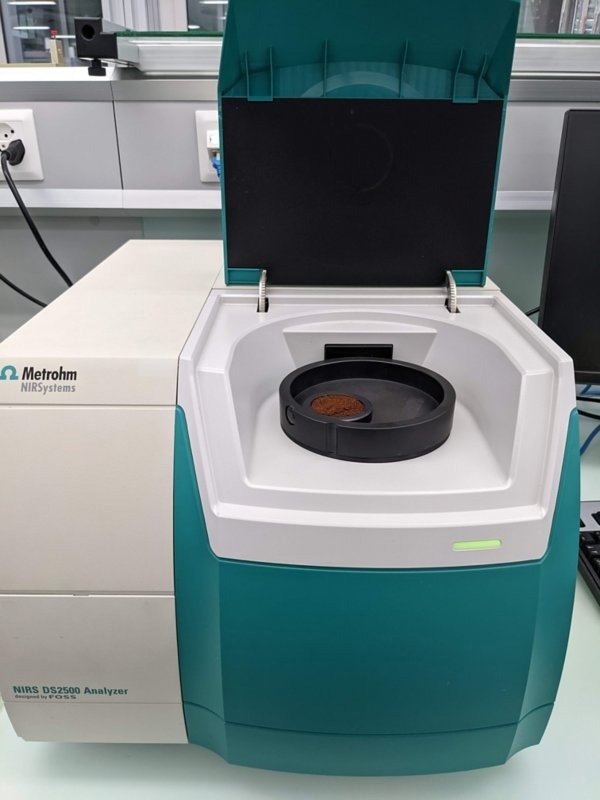
Figure 1. A Metrohm DS2500 Solid Analyzer with ground coffee beans held in a NIRS mini sample cup. Image Credit: Metrohm Middle East FZC
Result
The Vis-NIR spectra obtained were used to generate prediction models for the different reference parameters, as shown in Table 2. Correlation diagrams that demonstrate the relationship between the Vis-NIR prediction and the reference values are displayed in Figures 3–5 alongside the respective figures of merit (FOM).
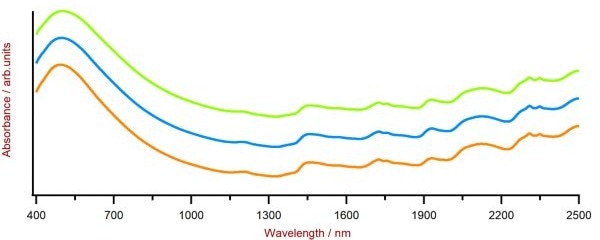
Figure 2. Selection of Vis-NIR spectra of roasted and ground coffee bean samples. Data was obtained with a DS2500 Solid Analyzer. A spectra offset was applied for visualization purposes. Image Credit: Metrohm Middle East FZC
Result Caffeine In Roasted Coffee
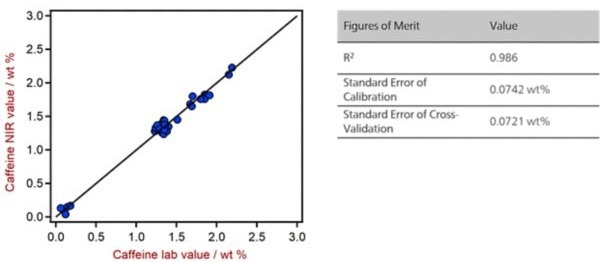
Figure 3. Correlation diagram and the respective FOMs for the prediction of caffeine in roasted ground coffee samples using a DS2500 Solid Analyzer. The lab values were determined using ion chromatography according to the guidelines in ISO 20481. Image Credit: Metrohm Middle East FZC
Result Water Activity In Roasted Coffee
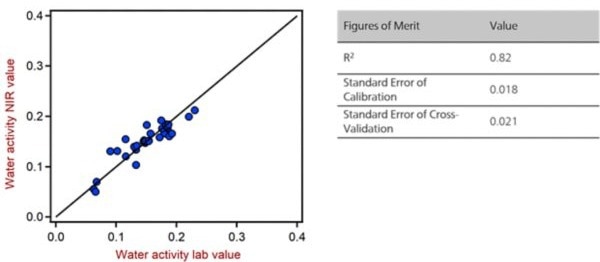
Figure 4. Correlation diagram and the respective FOMs for the prediction of water activity in roasted ground coffee samples using a DS2500 Solid Analyzer. The lab values were determined according to the guidelines in ISO 18787. Image Credit: Metrohm Middle East FZC
Result Moisture In Roasted Coffee
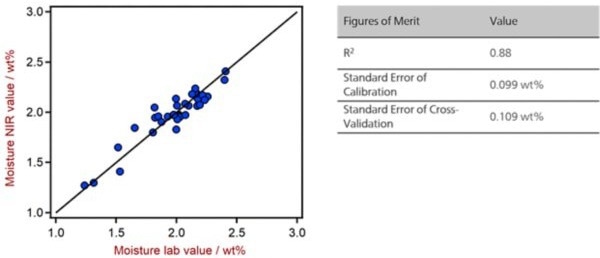
Figure 5. Correlation diagram and the respective FOMs for the prediction of moisture in roasted ground coffee samples using a DS2500 Solid Analyzer. The lab values were determined according to the guidelines in DIN 10772-1. Image Credit: Metrohm Middle East FZC
Conclusion
Here, in this article, the value and feasibility of near-infrared spectroscopy for the analysis of several quality parameters in roasted ground coffee has been presented.
One NIRS analyzer can quantify the caffeine concentration (0.1–2.5 wt%) as well as determine water activity and moisture content in a single measurement.
The results are delivered in under a minute, and chemical reagents or sample preparations are required for the analysis. The time savings generated by NIRS compared to the conventional analytical methods are exceptional.
Table 2. Time to result comparison for different methods used to analyze coffee. Source: Metrohm Middle East FZC
| Parameter |
Method |
Time to result |
| Caffeine |
IC System (ISO 20481) |
120 min (sample preparation and measurement) |
| Water activity |
Water Activity System (ISO 18787) |
15–30 min |
| Moisture |
Oven – Loss on drying (DIN 10772-1) |
13 hours (sample preparation and measurement) |

This information has been sourced, reviewed and adapted from materials provided by Metrohm Middle East FZC.
For more information on this source, please visit Metrohm Middle East FZC.